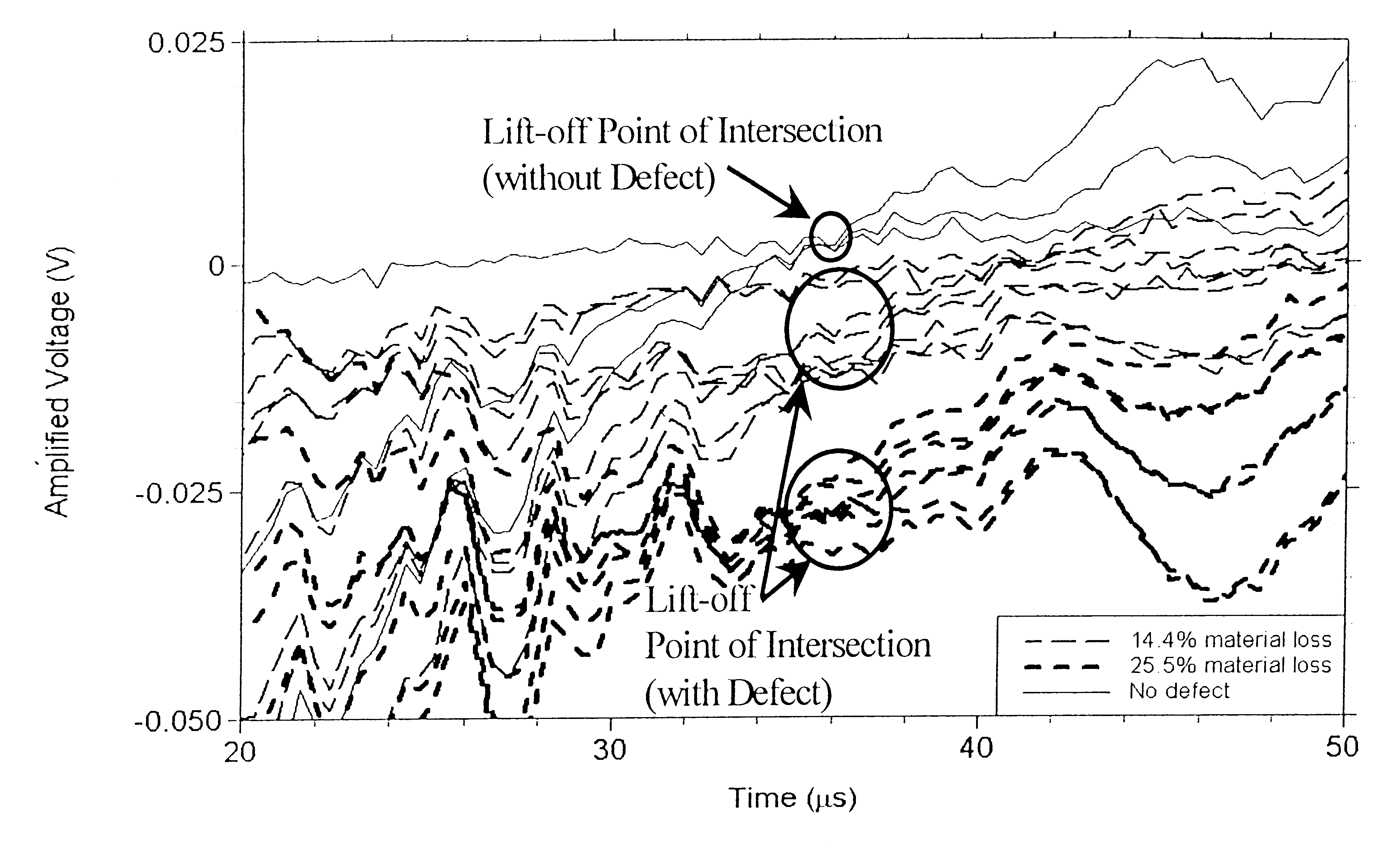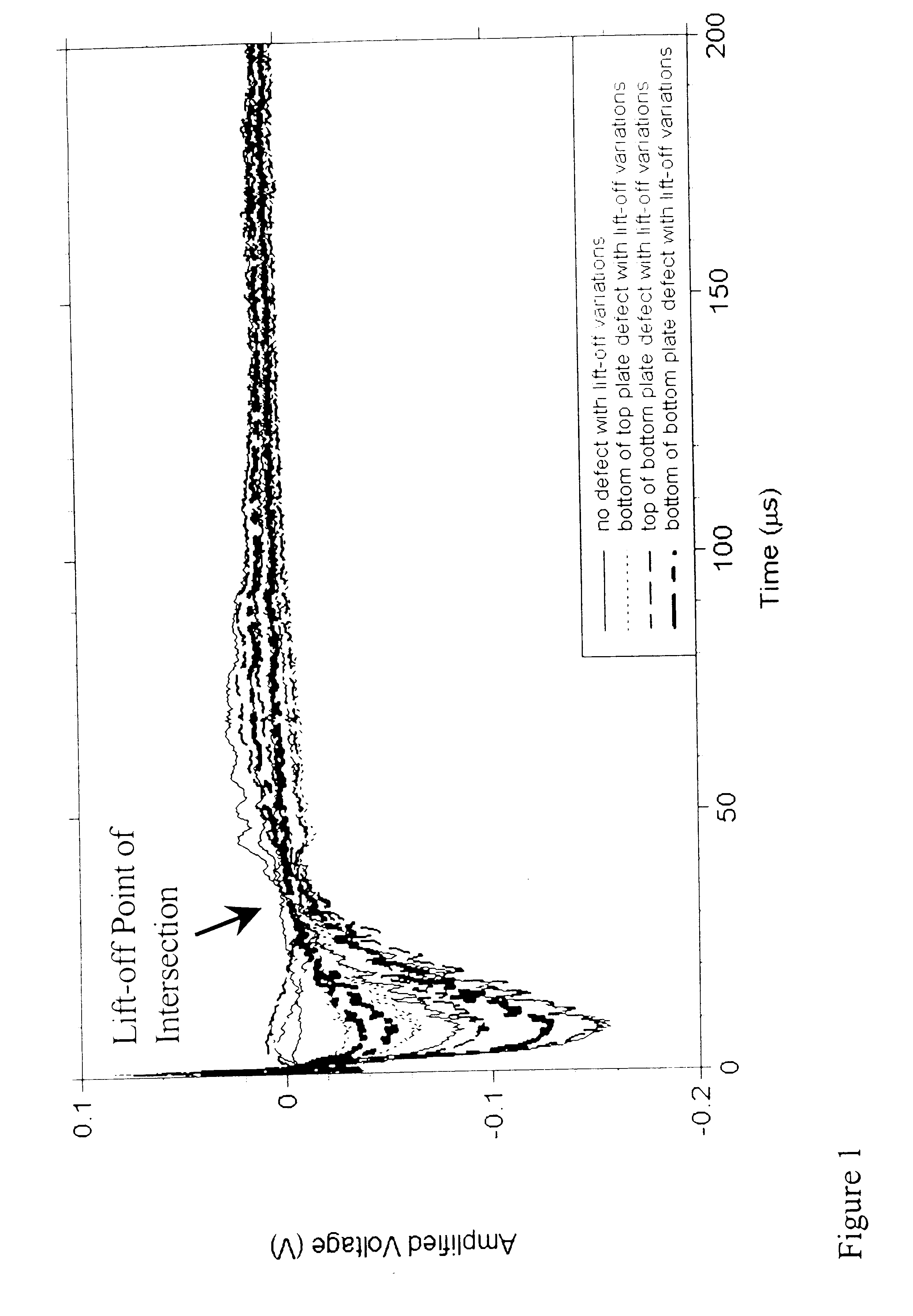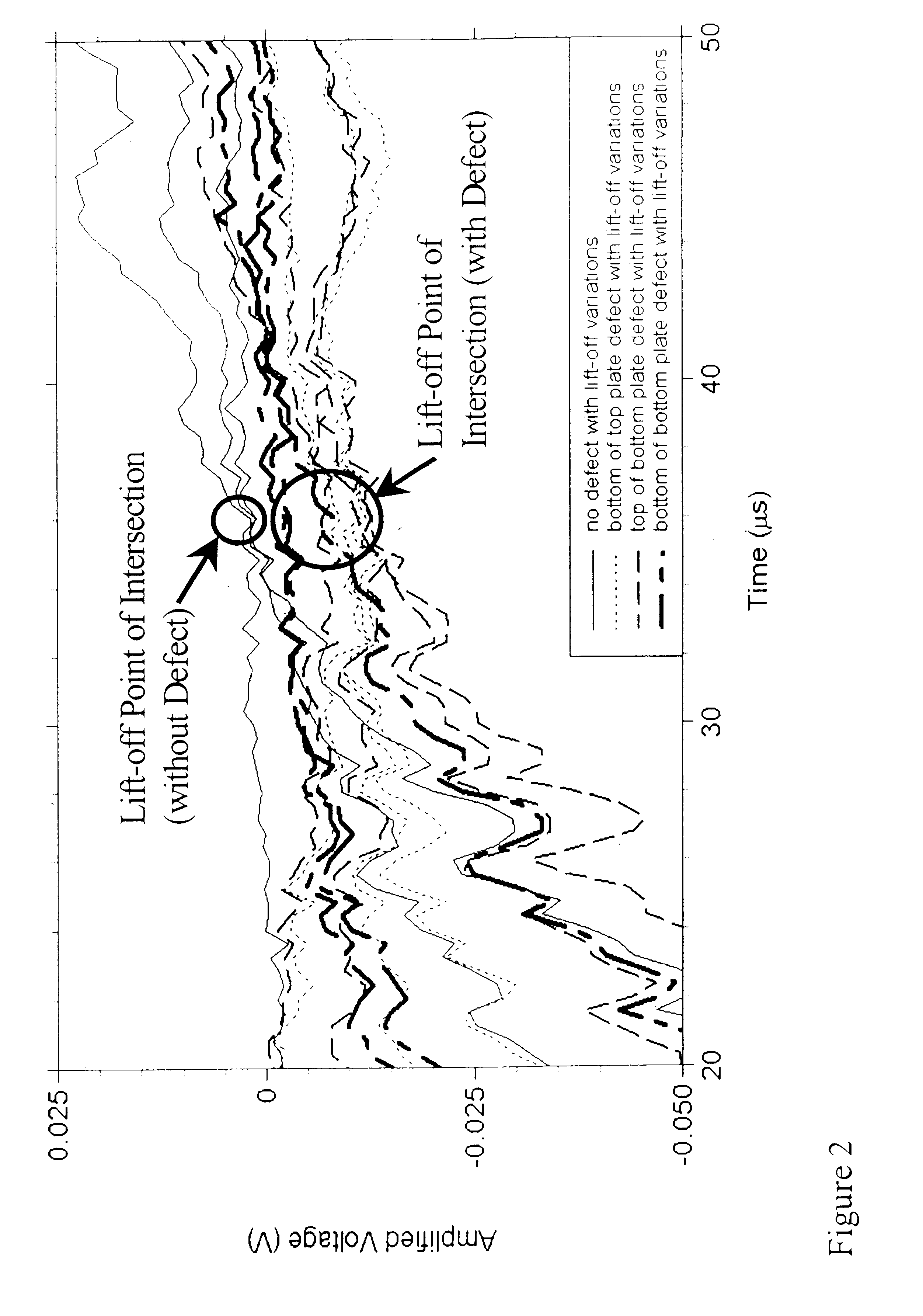Pulsed eddy current method for detection of corrosion in multilayer structures using the lift-off point of intersection
a multi-layer structure and pull-off point technology, applied in the direction of magnetic measurements, instruments, measurement devices, etc., can solve the problems of affecting the structural integrity of equipment, affecting the structural integrity of the fuselage, and affecting the stability of the structur
- Summary
- Abstract
- Description
- Claims
- Application Information
AI Technical Summary
Problems solved by technology
Method used
Image
Examples
Embodiment Construction
will be more readily understood when considered in conjunction with the accompanying drawings in which:
FIG. 1 is a composite graph of signals showing the effects of lift-off (the distance between the transducer and test object) on balanced transient responses for a single coil transducer,
FIG. 2 is an expanded view of FIG. 1 near the Lift-off Point of Intersection,
FIG. 3 is a composite graph of signals at the Lift-off Point of Intersection and illustrates the ability of the present invention to quantify material loss independently of lift-off variations using a single coil transducer,
FIG. 4 is a composite graph of signals that illustrates the effect of lift-off on balanced transient response for a driver-pickup transducer and the separation of signals at an area with defects and one without defects,
FIG. 5 is an expanded view of FIG. 4 near the Lift-off Point of Intersection, and
FIG. 6 is a composite graph of signals near the Lift-off Point of Intersection to illustrate the ability to...
PUM
| Property | Measurement | Unit |
|---|---|---|
| length | aaaaa | aaaaa |
| diameter | aaaaa | aaaaa |
| diameter | aaaaa | aaaaa |
Abstract
Description
Claims
Application Information
 Login to View More
Login to View More - R&D
- Intellectual Property
- Life Sciences
- Materials
- Tech Scout
- Unparalleled Data Quality
- Higher Quality Content
- 60% Fewer Hallucinations
Browse by: Latest US Patents, China's latest patents, Technical Efficacy Thesaurus, Application Domain, Technology Topic, Popular Technical Reports.
© 2025 PatSnap. All rights reserved.Legal|Privacy policy|Modern Slavery Act Transparency Statement|Sitemap|About US| Contact US: help@patsnap.com



